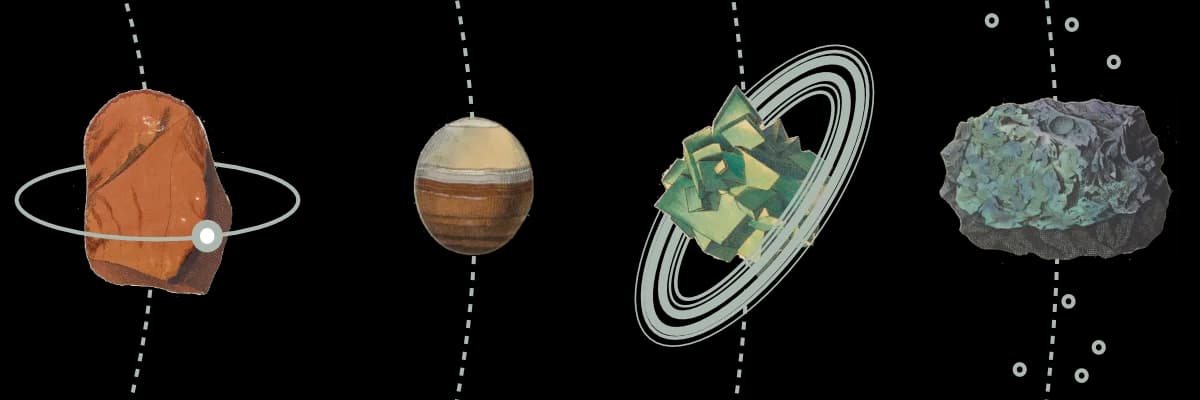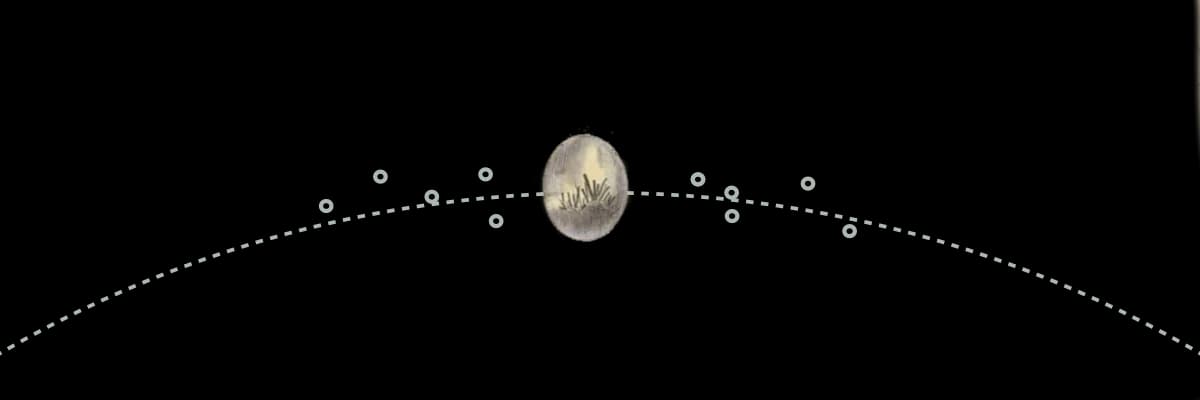- Published on
Designing A Perfect Rock
- Authors

- Name
- Nick Gralewicz

One of my 2024 goals was to "make, playtest, and release three games." I knew that one or two would likely be small games, yet I hesitated joining any small game jams. “Best to keep my efforts focused," I told myself, “reduce distraction and concentrate on the big fish."
But after a random Discord conversation left me asking “how would I incorporate rocks into a game?", A Perfect Rock just tumbled out of my brain and onto the page.
A Perfect Rock is a sci-fi worldbuilding game for rock collectors, where you search for a new home planet by exploring the rocks, gems, or crystals in your collection. The vibes are inspired by The Outer Wilds, Interstellar, and Subnautica, but the design was inspired by the recent games and conversations in my life.
In fact, I think this is exactly why the game came together so quickly.
So let's explore those influences and see how A Perfect Rock was formed from them.

In This World
I wanted to make a one-page game, partially because the 2024 One Page RPG Jam is happening right now, and partially because I wanted it finished and out of my head.
A single page isn't a lot of space, so my design goals were:
- Make it easy to learn and accessible.
- Have it encourage player creativity.
- Keep it tight and have an ending.
In This World, the awesome worldbuilding game from Ben Robbins, hits all of these. Choose a real-world topic (say, tattoos or robots) and quickly create four different worlds that explore the topic in a unique way. It deserves a lot of praise for its high creativity, quick pace, and super simple rules.
A really compelling aspect is comparing the worlds you create. It's not part of the rules, but you can't help contrast “the world where tattoos are mandatory at age 18" and “the world where digital tattoos hold secrets from long ago." I liked this comparison so much it inspired the core question of A Perfect Rock: which planet will you choose to live on?
Also, In This World has you create four worlds which is an oddly refreshing number. I often use three (because omne trium perfectum) and six (because it's the perfect die), but four works really well when comparing things. Clayton Notestine offered this great reflection on four:
Players will be inclined to subdivide them into pairs or separate one from the others. That’s the power of four. It feels like many but is still divisible.
And so A Perfect Rock asks you to explore four planets; more interesting than three, less overwhelming than five.

Loops and Subloops
I admit, loops and subloops have been on my mind since Caroline Hobbs' recent post on the topic. Simple and clear loops make for easy-to-learn games which keep players focused on creating, not remembering the rules.
I agreed with this so much I stole valuable one-page real estate to reinforce the gameplay loop in A Perfect Rock:

You can see the similarities with Rusałka's loop, which we studied in the previous post:

Or even In This World's loop:

Studying these game loops helped me understand their design and helped me create a new game quickly.

Rusałka
My recent design study of Rusałka left me with this insight:
Rhythmically varying between “solo/descriptive”, “interactive”, and “collaborative” scenes is engaging.
I think it's engaging because player authority (who has the power to create?) and transparency (is there information hidden from any players?) is different in each.
- In collaborative scenes: authority is shared and transparency is high. Everyone is co-creating, the story is molded into what we all agree is exciting, there are no secrets here.
- In solo/descriptive scenes: only one person has authority and transparency may be low. One person is creating what they want and other players may be surprised by knowledge or events.
- In interactive scenes: multiple people have authority, but transparency may be low. Everyone brings their own agenda and, through the magic of roleplaying, something unique and unexpected emerges at the end.
In A Perfect Rock players collaborate during setup, take turns describing their exploration of a planet, and finally interact and discuss how the planet could be made their home. It's simple and specific, but it hits the variation while keeping the theme tight.

Make Your Own Rock
I did not expect to join the One Page RPG Jam, but when inspiration struck, I was glad I could pull ideas together quickly. It's a good feeling to have a game out-of-your-head and onto-the-paper, mostly because it's not competing for my attention anymore!
If you want to make a game, I'd offer the same well-worn wisdom:
- Play lots of games, and play different types of games.
- Study those games and learn from the design.
- Read about how other designers think, and try applying those frameworks to your design.
Expanding on 3, I would also recommend the Make your own one-page RPG guide from Exeunt Press. It's not only a great game design resource, it also examines layout, art, and publishing: critical aspects to getting a nice product into the world.
And if you like GMless sci-fi worldbuilding, rock collecting, or just being creative for an hour, please check out A Perfect Rock!
I hope you find a perfect planet to live on.